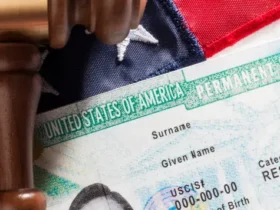The U.S. Air Force and North American Aerospace Defense Command (NORAD) have shot down four flying objects over the past couple of weeks. The Biden administration and the Pentagon have announced that they believe these smaller “high-altitude objects” were other surveillance objects but haven’t confirmed nor denied what they are and it is unclear where or who they are from. This is raising concerns about national security with the increase in Air Force fighter jet deployments during supposed “peacetime”.
The government has stated they do not believe these objects are intergalactic, but the public has gone wild with speculation about extraterrestrial visitors with searches and posts about UFOs increasing by over 300%.
Concerns over security and distrust in the government have increased whether or not these high-altitude objects are otherworldly or just “recreational”. Some far-right conspiracy theorists have alleged that the Biden administration launched these balloons to divert attention away from other pressing issues.
The first incident occurred when the Air Force spotted a Chinese surveillance balloon on Jan. 28, 2023, when the balloon entered U.S. airspace over Alaska. U.S. security officials have stated that the balloon was over “sensitive military sites.” The balloon was shot down on Feb. 4, 2023, over South Carolina after quickly making its way across the country.
China has said that the balloon was not a surveillance balloon but some sources have made differing claims as to what it is, with some sources saying it was a weather balloon blown astray and other sources saying it was a “civilian airship.”
The balloon has strained the already tense relationship between the United States and China since the ongoing trade war that started in 2018 due to the alleged theft of technological and intellectual property by China.
Additionally, the United States has raised security concerns over China’s increase in military spending, their presence in the South China Sea, their human rights abuses in Hong Kong and the “military harassment of Taiwan.” NATO declared China to be a “security concern” in 2021 with China’s development of nuclear weapons.
The possibility of Chinese surveillance amidst these security concerns has encouraged the U.S. government to be extra vigilant and “scour the skies” for other potential surveillance objects that are part of China’s global spy balloon program and is the cause for why the U.S. Air Force has seen an increase in high-altitude flying objects.
Another balloon was spotted over Latin America on Feb. 6, 2023, that China quickly admitted ownership over; however, Chinese officials stated that the balloon was used for “flight training” and was blown off course due to “weather conditions”. The Venezuelan and Colombian governments decided not to shoot down the balloon as it posed no threat but U.S. security officials believe it was another surveillance balloon in China’s fleet.
Both Colombian and Venezuelan officials stated they did not feel the object was a threat to security. The Venezuelan Ministry of Foreign Affairs even said they “reject” the attack of U.S. officials, stating “Once again, the United States resorts to the use of force instead of treating this situation with the seriousness and responsibility that the case deserves.”
The heightened security monitoring and increased presence of fighter jets in the sky makes the United States seem very trigger happy, especially now that the Biden administration just signed an $816.7 billion defense budget.
It begs the question, why does the United States worry so much? The United States has been vocal about their concern over the Chinese military and power for years and released a statement focusing on China. The United States is worried that China is going to use their military strength to become an international power, yet there is little concern over Japan or India becoming an international power.
The United States has the highest defense budget with over $600 billion more than China. The United States has also released multiple surveillance balloons themselves with the Chinese Foreign Ministry stating that the United States has sent over 600 “warships and planes” over China to gather intelligence. The U.S. Department of Defense even stated they plan on making the military “more mobile, more distributed, more resilient and lethal.”
There are legitimate concerns over China’s nuclear arms and their human rights abuses that have potentially been heightened because the United States doesn’t have the control over China that it has over other countries. The United States has a large sphere of influence, offering military aid to over 30 countries and being linked to 29 countries through NATO. China doesn’t need to rely on the United States for economic or military help and has direct relations with other countries the United States is wary of, mostly the connection with Russia.
The response to the Chinese surveillance balloon that was spotted over the United States in conjunction with the ongoing concerns with Chinese military power seems to make a legitimate argument for the need for heightened security and a bigger budget. However, it is important to question how much worry is necessary, especially when considering how strong the U.S. military is compared to the rest of the world.







